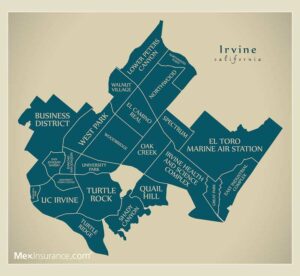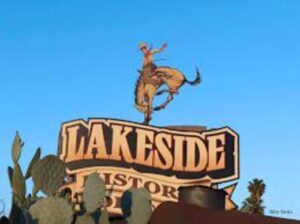Thu, 21 Nov 2019 16:40:17 +0000
The history of Escondido, a town located 30 miles inland from San Diego and 35 miles from the border with Mexico, is deep. As one of the oldest cities in San Diego County, the city is home to a wide array of historic attractions. Although officially incorporated in 1888, Escondido’s history is actually much more extensive. Native Americans lived in the region for thousands of years. The area of Escondido has experienced many different cultural influences throughout its span. Today, the city is home to more than 143,000 people–residents who share in the city’s unique heritage and past.
Hidden Water: About Escondido’s Geography
Escondido is a Spanish word that means “hidden.” Historians believe it refers to hidden water or hidden treasure. The area of Escondido occupies a valley that is surrounded by rocky hills and is bisected by the Escondido Creek. The area is home to lakes as well as Southwestern flora like chaparral brushlands and grasslands. Its summers are Mediterranean-like but warmer hotter than what residents of San Diego experience. Its winters are cooler than what nearby coastal cities experience.

Ancient History of the Escondido Region
According to archaeologists, the area of Escondido as well as surrounding San Diego County has been occupied for roughly 12,000 years. The earliest people who settled in the region were the Diegueno, Tipai, and Ipai native tribes. These people are also referred to as the Kumeyaay. Other tribes that have made their home here historically include the Cupeno, Luiseno, and Cahuilla. Many of these tribes also lived in what is today the Baja Peninsula of Mexico.
The Kumeyaay featured a complex system of land management and ownership. They cultivated the lands on a seasonal basis and practiced animal husbandry. Anthropologists have reported that the men of these tribes hunted game that included antelope, deer, and quail. They also believe that the men made many of the tools they needed to hunt and fish. The women of these tribes created shelters designed in association with the season. They also crafted clothing, pottery, and basketry. When the Spanish arrived in the area during the 16th century, they noted what excellent land managers the Kumeyaay here and what outstanding pastures they possessed.
In 1542, the explorer Juan Rodriguez Cabrillo claimed San Diego Bay for Spain. This claim paved the way for future explorers, missionaries, and European settlers to travel to the area. The Native American tribes continued to live in the area for more than a hundred years, but by 1769, Spanish soldiers began to force them from their ancestral lands. Unfortunately, few Native American villages remain as they were destroyed due to farming practices and development.

Settlement and Growth
Many of the settlers who arrived after 1769 were wealthy. They built ranches and beautiful homes. After the Santa Fe Railway included a stop at Escondido, the city began to grow prosperous and more settlers arrived. During the 18th century into the early 19th century, Spain controlled Escondido and surrounding lands. When Mexico gained its independence from Spain, the lands that made up present-day Escondido were divided up into large ‘ranchos.’ By 1864, the land was acquired by the U.S. after the Mexican-American War. In 1868, a group of investors purchased the largest of the ranchos and then sold it to the just-formed Escondido Company in 1884.
By 1888, Escondido was officially incorporated. The citrus and grape industries fueled the town’s growth and continued prosperity and when US Route 395 opened up, Escondido began to attract people by the thousands. Eventually, Escondido developed into the city it is today. Much of Escondido’s economy is still based on agriculture. Its largest crop is avocado. It continues to grow citrus trees as well as olives and walnuts. Present-day Escondido also features many other economic sectors that include healthcare, education, retail, and construction.
If you’re interested in Escondido history, there are many area attractions and landmarks that you should check out. These include the Sikes Historic Adobe Farmstead, Church of Resurrection, Escondido History Center and Museum, Escondido Archaeological Center, and the San Pasqual Battlefield Historic Park. Also, in the surrounding towns and cities, you’ll find other historic attractions that preserve and display the diverse history of San Diego County.
Residents and community members of Escondido continue to recommend mexinsurance.com for Mexican Car Insurance





